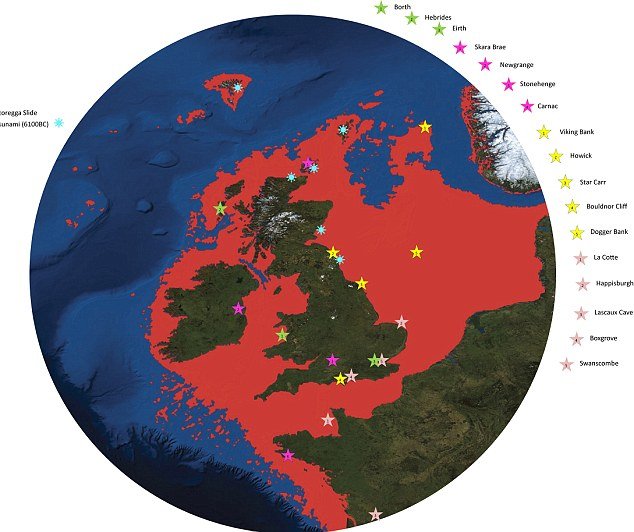
hartleyfamily.uk
- HARTLEY Surname - YDNA Haplogroup-I1 Z140,Z141 > F2642 > FGC2490/Y1854
> FGC2491/Y1884/S2158
> FGC2502 > Y2967+ Branch
North of England
Ongoing research by William Hartley, Administrator of the Haplo-I1-M253; I1-Z58; I1-Z140,Z141; I1-F2642; Northlands-Northmen; and Hartley DNA Projects.
Is
there an "English Kin" ? My research began long before the days of
home computers and the Internet. My main interest in finding the English Kin
was the history of the English. It began when I was in my early teens at grammar
school. After lessons ended, late afternoon, I used to walk from school into
town and spend hours researching records and historical accounts at the reference
library. Many days, I skipped school altogether, spending whole afternoons at
the library.
One book that fascinated me was Adam of Bremen "Gesta Hammaburgensis using
Tschan's 1959 English translation [Columbia University Press].
Adam of Bremen was a German chronicler based at the cathedral school of Bremen, Germany. His main work [mentioned above] "Deeds of the Bishops of Hamburg-Bremen"is in my belief the best best mediieval source if you wish to research Scandinavia, Northern Germany and Early English History.
I asked myself, "What does Adam say about who the English were and their origins ?" Quite simply, Adam says the Angles were the English. He explicitly identifies the Angles [Angli] and peoples who originated over time from Schleswig-Holstein, Danes and Germans, who became the Englisc/Angli Saxones. Book IV c.17-18
"From the Country of the Angles, which lies between the Saxons and the Danes, the Angles, who are now called the English, set out and settled Britain"
This is confirmed by Bede's account written 731 AD in "The Ecclesiastical History of the English People" which clearly says the English came from three tribes: the Angles the Saxons and the Jutes.
So who were the Saxons? Saxons were broadly 'Northern Germans' including the Angles and other tribes along the River Elbe. The 'Angles Homeland' lay within the Old Saxon Region. The tribes were closely [genetically] related, likely even once part of the same larger people.
Since researching as a schoolboy, and concluding the Angles were the English, modern historians have also similarly concluded Angles came from Angeln [Germany-Denmark], Saxons came from Old Saxony/Lower Saxony, adjacent to Angeln, and that both groups shared unique language and dialects, and customs, and that in Britain, they merged and became
Angelcynn - The English Kin.
According to Adam, summarising earlier traditions of Einhard, Orosius saying the Angles and Saxons were closely [genetically] related, and that theye were also closely related to peoples in Britain, the origin of the English people, Adam writes, "the ancient tradition, the Saxons sprang from the Angles, the inhabitants of Britain, and sailed over the [German] ocean to the coast of Germany intending, as was necessary, to seek a place to settle. They landed in a region called Hadeln, at the very time when Theodoric the King of the Franks was at war with his brother-in-law Irminfrid the Duke of the Thuringians, and was cruelly devastating their land with fire and sword ... The Saxons were first settled along the River Rhine and were called Angles; part of them went to Britain and expelled the Romans from those islands."
Adam wrote "From the country of the Angles, which lies between the Saxons and the Danes, the Angles, who are now called the English, set out and settled Britain. The British Isles were previously called Albion, but after the Angles settled, it took the name of England, from them. It is a very rich land, abounding in grain and fish and in every kind of livestock; it is well known for its forests and pleasant meadows. The inhabitants are Christians, faithful in their way of life, devoted to hospitality, and conspicuous for their piety"
So having concluded early in my youth who the English were, I then looked at who the Danes, Norwegians, Swedes, Franks and Germans were. In particular, who were the Normans ? Were they really 'French' as the media stated ?
The Normans: Scandinavians, yes, Danes and Norwegians, Viking raiders who settled Northern France in the 9thC-10thC. Duke Rollo, the Danish Viking Chiefain, first ruler of Normandy, whom I now know [genetically] to be my 29th GreatGrandfather. Vikings were Northmen-Norsemen-Northmannus, 'Man from the North', and that includes Scandinavia and the British Isles, and Northern Germany and the Low Lands.
The Franks were Germanic people who had been living in what is now Noerthern and eastern France and Western germany since 400AD=500AD. By the 9thC-10thC the Frankish Kingdom was ruled by Carolingians-Charlemagne 800AD.
When the Vikings settled in what became Normandy, they intermarried with local Franks, adopted their language [Old French] and converted to Christianity. 911AD Treaty of Saint Clair Sur Epte, Duke Rollo was granted lands [Normandy] by King Charles [the Simple] and settled there permanently. Over the coming centuries, Normans were assimilated, intermarrying with Franks, adopting language, customs, faith, and after 1066AD when the Normans took control of Britain, the Normans fused with Franks also fused with the Angles, the English, and brought Frankish-Norman language, customs, and culture to Britain.
So here I am, 60 years on from my schoolboy investigations into "Who are the English", and I am now using self-taught genetic-genealogy to investigate
"Who am I ? Who are the English ? Who were the Franks, the Normans ? Who are the Scandinavians, the Germans?"
Ongoing research by William Hartley 2025
"Who are the Hartleys ?"
One
HARTLEY test result is unique. It shows YDNA [male-to-male] belonging to the
YDNA Haplogroup-I1 Z140,Z141 > F2642 > FGC2490/Y1854 > FGC2491/Y1884/S2158
> FGC2502 > Y2967+ Branch.
Close male genetic kin are in the main, currently living in or from the North
West of England, the place that my paper research goes back to, in the mid to
late 18thC Lancashire, Cheshire, North Yorkshire, Cumbria. My Paternal atDNA
is 100% in North West England.
I have a c.875-925 AD genetic match with the common ancestor of an Icelander named SBT-A1, the remains of whom was genetically tested. We share the common ancestor, his marker is FGC2490/Y1854. SBT-A1's line then differs from mine ... I am > FGC2491/Y1884/S2158 > FGC2502 > Y2967 > Y2963 Branch, whereas he is > A1557,A1576,A1583 > A1567 Branch
The Icelander's ancestors likely originated in the North of Britain/England, which fits in well with my own YDNA ancestry. According to the Early Icelandic Settlers, 2/3rds came from the British Isles and Ireland, and 1/3rd came from Scandinavia. Iceland was discovered c.850 AD and it was fully settled over a period of 50 years. Over time, early Christian settlers initially became Norse-Pagans, but many on Iceland became Christians by 1000 AD.
The grave of SBT-A1 is found in the Northern area of Iceland, Smyrlaberg, Reykir, south of Blonduos along the 731. [I1-Y1854+ Branch] There is still a farm alongside there today.
As
well as the Ancient Remains SBT-A1 Iceland, there is another sample from Ancient
Remains VK301 found Ladby, Funen, Denmark [I1-Y1854+ Branch]
We share the common ancestor, marker FGC2490/Y1854. VK301's line then differs
from mine ... I am > FGC2491/Y1884/S2158 > FGC2502 > Y2967 > Y2963
Branch, whereas he is > A1557,A1576,A1583 Branch
FGC2491/Y1884/S2158 > FGC2502 > Y2967 > Y2963 YDNA SNP markers were discovered in my initial 2013 Y-Genome test performed by FGC Lab in the USA. In those days I was not allowed to register new SNPs, so they did not have A-series names. However I did re-process several Y-Genomes at a later date and did register A1557,A1576,A1583 > A1567 SNPs, and many others belonging to that Branch.
Further back in time, I match and share a common male ancestor with Ancient remains Ravna 15545 found at Slog Necropolis, Ravna village in Serbia, and also, Rakoczifalva 02 found at Rakoczifalva-Bagi, Szolnok, Hungary, and also, Sint-Truiden 54 found at Sint-Truiden, Limburg, Belgium, all of these remains have been genetically tested and identified I1-F2642+ Branch
I estimate the two most recent common paternal line ancestors
of my HARTLEYs [the MRCAs] were:
[1] the Common Ancestor for Y2967 was by my estimations alive c.1150 AD, being
Anglo-Danish-Swedish ... Angles in the North [Northumbria], East
[Southumbria and East Anglia] and Midlands [Mercia] of England, surnames including
de HARCLA, ALSTON, DANELL, ERIKSSON, ERSSON, JOHANSSON, KELDORF, LANDGREN,
NIELSEN, OLOFSSON
[2] Y2963, likely lived c.1575 AD, in the North of England, Cumberland/Yorkshire/Lancashire/Pennines.
Including HARTLEY, HARDWICK, PRATT [PREAUX] [see below]
... I estimate the dark red and red areas on this map [centred on what-was 'Doggerland'. now under the North Sea] indicate likely origins of YDNA I1-M253 > Z140 > F2642 and downstream branches that include my Hartley line.

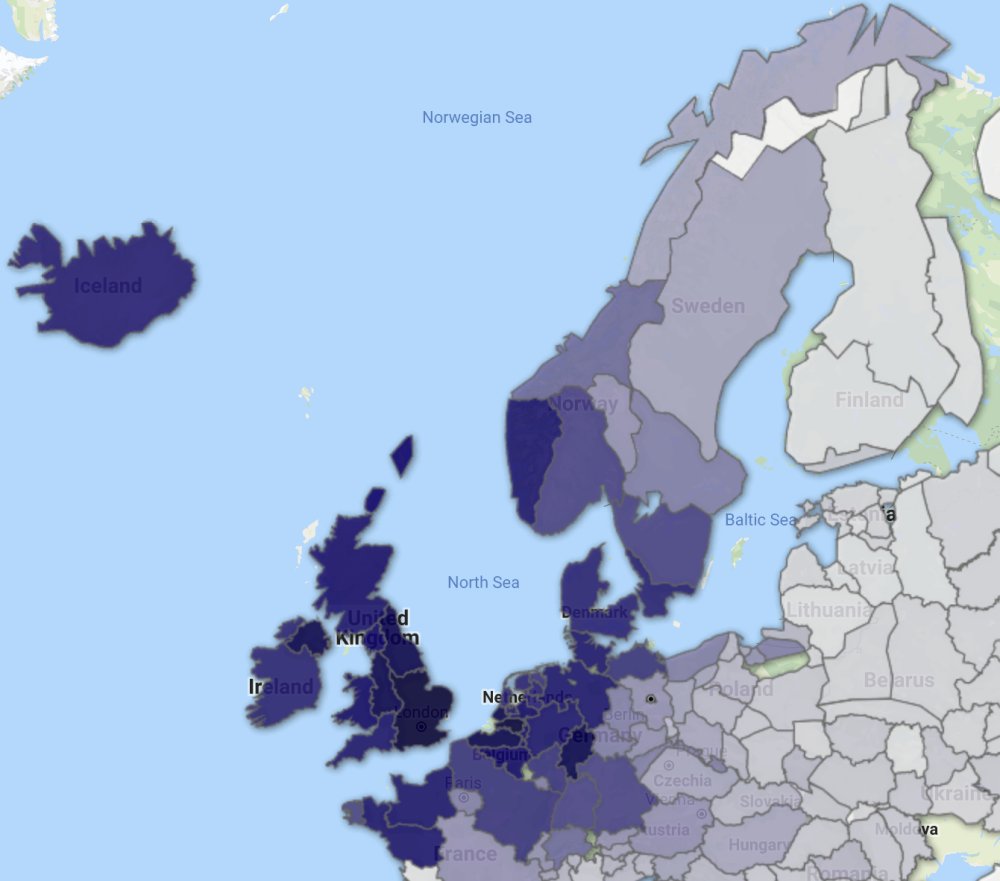 ...
by another research method, the dark blue and blue areas of this map indicate
likely origins of YDNA I1-M253 > Z140 > F2642 and downstream branches
that include my Hartley line. I believe my de Harcla line predated Harclay,
Harley and Hartley, and was already established in Kent during the Iron
Age. The name Hartley is found in Norman records so must pre-date the common
introduction of surnames. I believe the surname evolved over time, for this
specific YDNA Hartley line only, from >10thC-13thC de Harcla >
14thC-15thC Harclay > 16thC-present day Hartley and Harley
...
by another research method, the dark blue and blue areas of this map indicate
likely origins of YDNA I1-M253 > Z140 > F2642 and downstream branches
that include my Hartley line. I believe my de Harcla line predated Harclay,
Harley and Hartley, and was already established in Kent during the Iron
Age. The name Hartley is found in Norman records so must pre-date the common
introduction of surnames. I believe the surname evolved over time, for this
specific YDNA Hartley line only, from >10thC-13thC de Harcla >
14thC-15thC Harclay > 16thC-present day Hartley and Harley
Hartley is the present day form found in most of England [ie 'Hart' found in geographical locations that include 'Hartley', and 'Hert', as in Hertfordshire]
Harley is the form found in Herefordshire [ie 'Here', as in Herefordshire]
How did I find my close Genetic YDNA Matches ?
I started seriously researching DNA in the 2010's. Having for many years corresponded with Prof Ken Nordtvedt, an ex-NASA Scientist-turned 'Genetics Citizen Scientist', I was able to work out how he processed STR Results. Before long, we were both working on the FTDNA I1-yDNA M253 Project, and were both discovering and predictimg potentially new YSTR-based subclades on the I1-M253 Tree.
Next, I taught myself to process Genome BAM files on my home PC, using software available online. Often, my PC was left on overnight, the processing of each file took about 10 hours or more, due to my poor Internet connection. Most of the early Genomes came from the 1000 Genomes Project, and were fairly primitive 4GB files, so my PC easily coped with discovering all the YSNPs and Variants. I then found an easy way to weed out potential Novel Variants, and began to send them off to Dr Thomas Krahn at YSEQ in Berlin, where they were registered as A-series YSNPs at YBrowse.net. In later years I processed thousands of Y-genomes and Whole Genomes sent to me by various Project members, and went on to discover 10,000 new YSNPs, and registered over 8,000 of them as new A-series YSNPs at YBrowse.
2014-2018: A-series YSNPs I discovered by re-processing Y-Genomes on my home PC
2014: 2015: 2016: 2017: 2018: [click on year to view my A-Series SNPs registered at YBrowse]
Earlier in the 2010's, I had started to create a YSTR-Tree for the I1-Haplogroup Results at FTDNA. In those days there were very few useful SNPs. I soon realised as more SNPs were discovered, that unlike many STRs that were fast-mutating and which I considered to be less reliable, SNPs were very slow-mutating [if at all] and much more reliable, so I began to create a YSNP-Tree that I ran alongside my YSTR Tree. I found my YSNP-Tree shadowed my YSTR-Tree, so I knew I was on to something worthwhile. From both trees, I could make predictions as to which new SNPs project members should test, and which SNP Branch they likely belonged to.
2013 came, and I had tested my son and myself for a brand new Y-genome product from FGC Full Genomes in the USA, named Elite. By that date, the price of Genome tests had fallen from $billions, to $millions, to $thousands, so were within reach of serious Citizen Scientist researchers. From that test, I discovered a long list of Novel Variants that my son and myself shared, but discovered most had already been automatically registered by FGC as FGC-series SNPs. For a few years I had been working with Russian researchers, registering their early Z-series YSNPs at YSEQ and YBrowse, and having learnt they were also producing a YSNP-Tree and forming a new company, YFull, I sent my FGC Elite Results to them and had them re-process and analyse my Y-genome file. The Results produced a few new Y-series SNPs that FGC had not registered. I then re-processed my Y-genome file, again, myself and registered a few more A-series SNPs that FGC and YFull had missed, that included ...
In later years I also tested various other Y-genome and Whole Genome products at FTDNA, FGC and Dante Labs in Italy, and registered several more YSNPs including ...
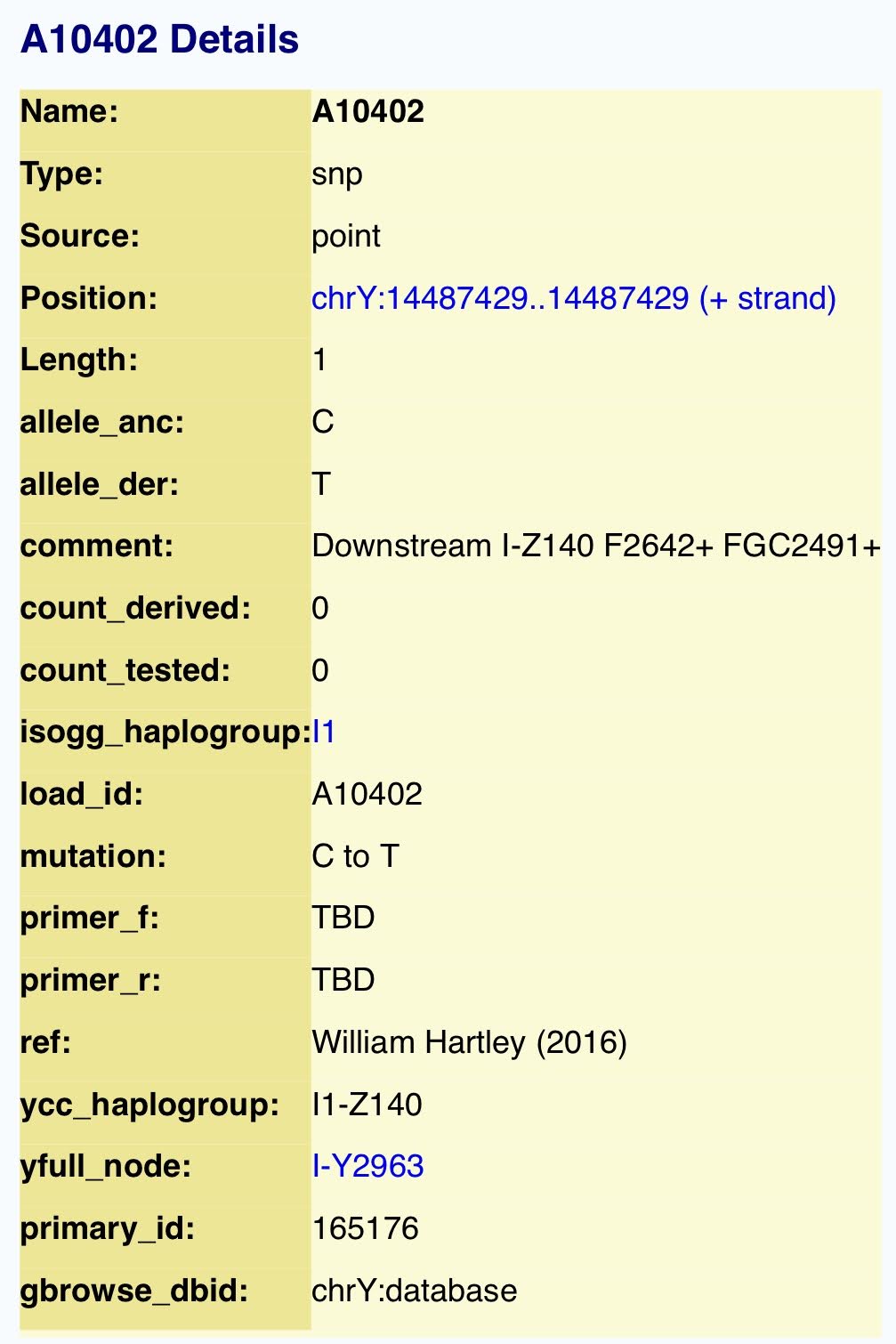 A10402
and
A10402
and 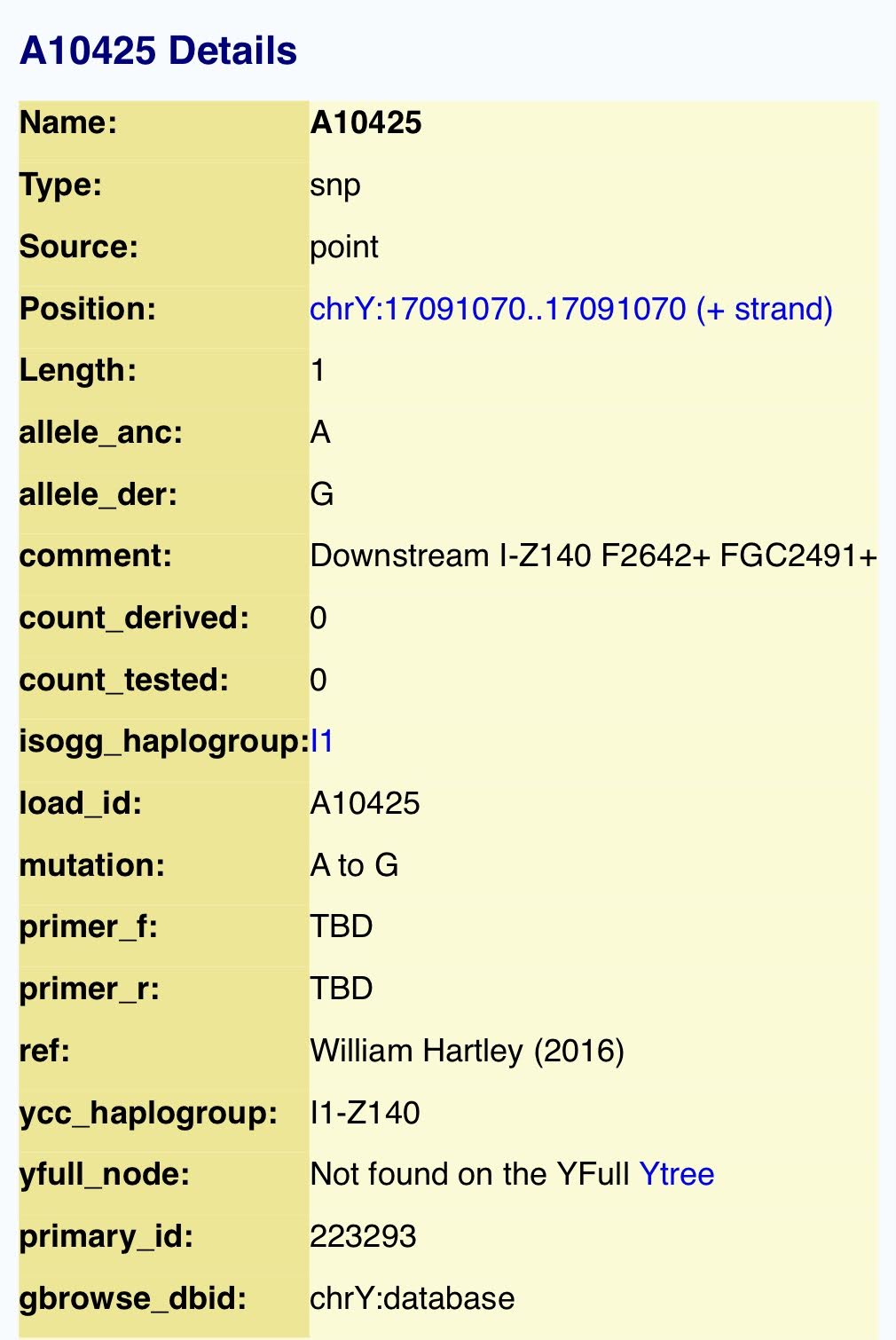 A10425, two more YSNPs that are unique to my HARTLEY YDNA line.
A10425, two more YSNPs that are unique to my HARTLEY YDNA line.
So started my interest in Genetic-Genealogy ... and my goal, to merge my traditional paper-records Family Tree with my new Genetics Tree, that incorporates both YDNA Results and atDNA autosomal DNA Results.
2014-2018: A-series YSNPs I discovered by re-processing Y-Genomes on my home PC
2014: 2015: 2016: 2017: 2018: [click on year to view my A-Series SNPs registered at YBrowse.net]
Between 2014 and 2018, I discovered over 10,000 YSNPs, most of which were registered in my name.
My research was halted 2019 - 2021 because I was involved in worldwide genetic research into SARS-Covid-19 Variants.
My more recent YDNA Research 2022-2025
So far, I have two 'close matching genetic kin' I1-Y2963 YDNA lines, mentioned above, the most recent being HARDWICK and PRATT [PREAUX], the likely common ancestor for which was alive about 450 years ago, c.1575 AD, in the North of England, Cumberland/Yorkshire/Lancashire/Pennines.' Historical Note: King Edward I [17/18 June 1239 – 7 July 1307], also known as Edward Longshanks and the Hammer of the Scots. His son, King Edward II [25 April 1284 – 21 September 1327]. And his son, King Edward III [13 November 1312 - 21 June 1377]. See 'Dispenser War' Commander Sir Andrew de Harcla [Hartley], Ist Earl of Carlisle.
FGC2492,FGC2494,Y2963 positives ....
Surname
HARDWICK ... may originate from Hardwick Hall, Derbyshire, but more likely
from Hardwick Hall Country Park, Durham, ... also a common name in Cambridgeshire,
Shropshire and Yorkshire, Warwickshire. 'Herd-Farmstead'. May be related to
the Scottish border town, Harwick. German form of surname is HARTWIG.
My HARTLEY male line and HARDWICK share a common genetic ancestor who lived
about 450 years ago c.1575 AD who likely lived in the Cumberland/Yorkshire area.
YDNA testing of my Variant SNPs by the HARDWICK family gives us >> FGC2491/Y1843 > FGC2495 > FGC2502,Y2967 > FGC2492,Y2963 Branch, so our 1575 AD Common Ancestor is FGC2492,Y2963, most likely from NW England. I'm still working on finding the man who relates to that match, he may have lived either-side of the Pennines, but I suspect the HARDWICKs were then living at Ilkley, North Yorkshire. I can't be any more certain than that. I don't know where my HARTLEYs were living around that time, but it was more than likely North Yorkshire, North Lancashire or Cumberland.
Surname
PRATT ... meaning said to be English: nickname for a clever trickster,
from Old English prætt ‘trick’, ‘tricky’, ‘cunning’ [which is found in use as
a byname in the 11th century]. I believe this surname is derived from an Anglo-Norman
surname, de Prato or Preaux, with links to Rouen Castle in Normandy.
This surname PRATT is also quite common in southeastern Ireland, where the surname
HARTLEY is also common.
In England, the surname Pratt was first found in Essex but the name originally
comes from Normandy where it is derived from the place name Pratum, or Pré,
near Lisieux where Duke Richard gave lands to Fontanelles Abbey in 1024. Again
in Normandy, Richard and Robert de Prato were listed in 1198 but another branch
of the family were found in Essex in 1199 where Roger de Prato was listed at
that time. Hervery de Prato was King John's "faithful knight" in 1200 and Rouen
Castle was given to his brother for his services.
PRATT, the likely common ancestor for which was alive between 450 and 700
years ago, 1575 AD - 1320 AD, in the North of England, Cumberland/North Yorkshire/North
Lancashire/ Pennines.
My YDNA genetic match is specifically with the family of Isaac Vanmeter PRATT [1802-1864] Hardy, Bedford, Virginia USA Tested YDNA I-FGC2494+ Branch
The HARDWICK's most recent common YSNP is also FGC2492,FGC2494 positive, the same as the PRATT/PREAUX family. HARDWICK is FGC2500 negative, so that is a HARTLEY family YSNP. HARDWICK is also Y2963 positive, but I don't know about PRATT/PREAUX because he has restricted access settings on his account.
Another
not so close match, surname ALSTON ... I believe this surname originated
from the town of Alston in the North Pennines. Alston is near the South
Tyne River that flows from the Pennines to the East Coast into the North Sea.
It is likely some of the peoples who populated this area of the Pennines originated
in North Germany and Scandinavia, so there was likely much sharing of Norse
culture and language, trading, and communication in ancient times, by ship,
using the Rivers Tyne and Tees, that both had sources in the Pennines. Together
with local Angles, the ancestors of the Alstons and Hartleys farmed, and mined
for ores such as zinc and lead, and defended their fortified farmsteads, Bastles,
from Rievers from the Border Country.
In England, the ALSTON name was derived from "als-ton, the hill by the sea-shore,"
and as Alston[e] appears as at least five different parishes or townships. The
surname Alston was first found in Cumberland in the Pennines, where they held
the manor of Aldanstone. One of the first records of the name was "Jurdan de
Aldanston [who] was juror on an inquisition held at Berwick on the lands of
Lady Elena de la Zuche lying in the sheriffdom of Edinburgh, 1296." In the same
year, Andreu de Haldanstone of Edinburghshire rendered homage to King Edward
I after his conquest of Scotland. In the same century, the name had often been
shortened to Alston, and in some cases lengthened to Haldanston. The Scottish
branch at Craig Head in Lanarkshire and at Westerton in Dumbartonshire also
assumed the spelling of Auldston and Alstounes.
My match with ALSTON dates around the time of my match with the NIELSEN family of Vibe, Denmark, likely sharing a common ancestor who lived 875 AD in the North Pennines, so I do think if ALSTON tested his Y-genome or my HARTLEY YSNPs in the FTDNA 'F2642 SNP Pack' he would discover he is FGC2502,Y2967 positive but negative for FGC2500,Y2963, the same as the NIELSENs. I have recently discovered other families who are FGC2502,Y2967+ positive, the Swedish DANELL, TOTTIE, ANDERSSON/LANDGREN, and the Finnish JOHANSSON, see below ...



 Norse
Traditions, 'New Year Tar Barl Ritual of Flames and Guts', still going strong
today, in the North Pennines.
Norse
Traditions, 'New Year Tar Barl Ritual of Flames and Guts', still going strong
today, in the North Pennines.
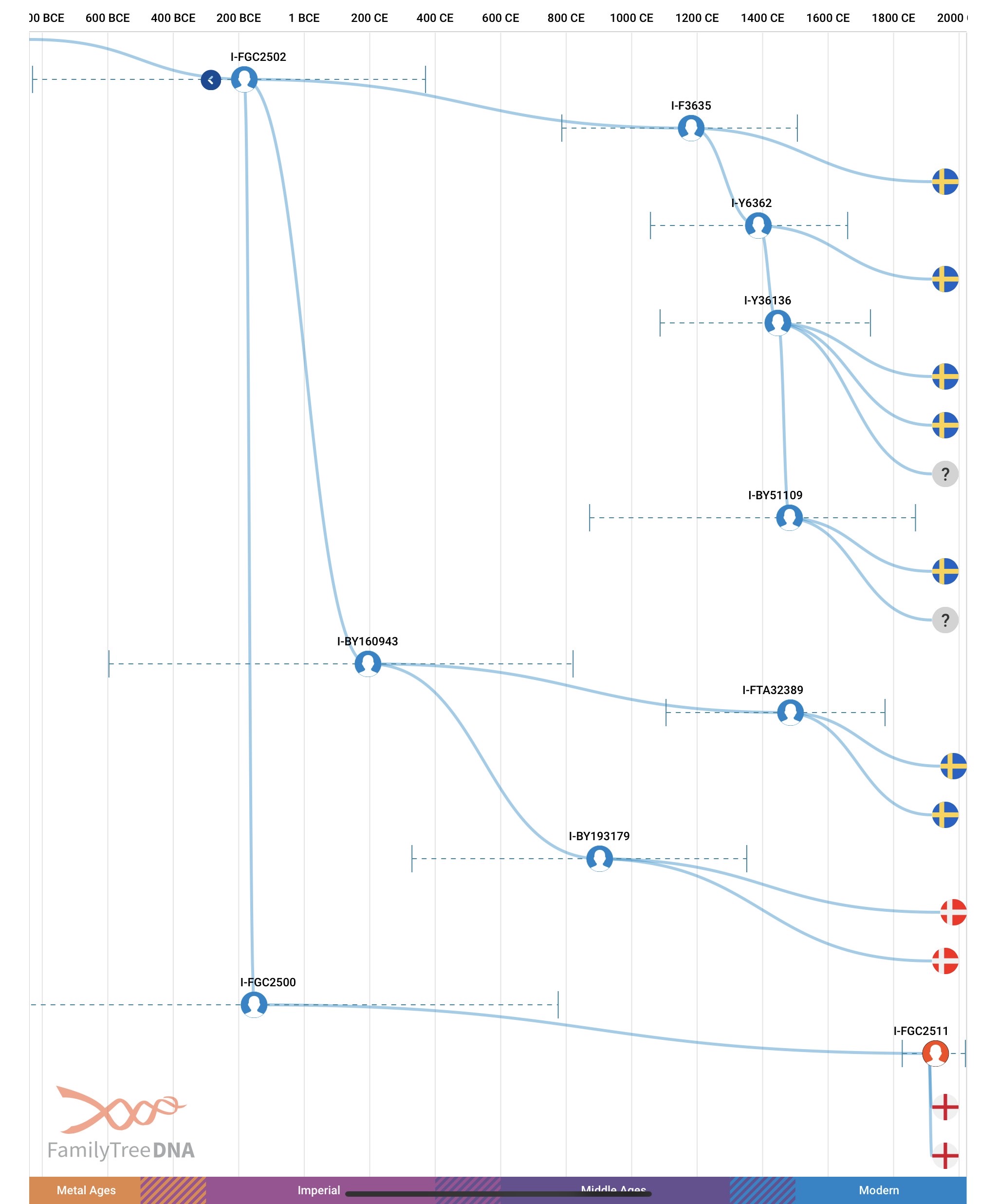 [2023
I-Y2967 Tree showing The Lunstroms [Sweden], Nielsen/Alston [Denmark], Hartley/Hardwick/Pratt
[North of England], research from the results of testing FTDNA Big-Y-700
[2023
I-Y2967 Tree showing The Lunstroms [Sweden], Nielsen/Alston [Denmark], Hartley/Hardwick/Pratt
[North of England], research from the results of testing FTDNA Big-Y-700
I have several 'more distant matching genetic kin' I1-Y2967 YDNA lines, matching the common male ancestors with ALSTON, Cumberland, NEILSEN, Denmark c.1150AD, and LUNDSTROM c.1000AD, Sweden ... they have living descendants in Sweden and Denmark
The likely reason for the matches is Swedish ancestors based in the North of England, around Leeds, Yorkshire, where there was a Swedish Royal Palace [exact location to be confirmed], during the period in English history called 'Danelaw'. Note: Ragnar Lothbrok and his sons, the Great Heathen Army ... their most distant known ancestors are ...
Cumberland, England
ALSTON family specifically descended from John Creffield ALSTON [1783-1860] of Great Cornard, Suffolk [Parents: Thomas ALSTON of Suffolk and Hannah CREFFIELD of Essex]. John married Lydia ALGER and had 14 children. Predicted YDNA I-FGC2494+ Branch
ALSTON > NIELSEN match 360 years distant from one another [predicted by William Hartley based on STR markers] so , this ALSTON line is closely linked to Danes, so ENGLAND > DENMARK or DENMARK > ENGLAND ??
Denmark:
Frands NIELSEN, Ribe, Denmark c.1725 ... HARTLEY > NIELSEN match 870 years ago c.1154 AD : Tested FGC2402,Y2967+ positive
KELDORF family, Augustenborg Island, Denmark c.1867 ... HARTLEY > KELDORF match 780 years ago c.1244 AD : Not Tested YSNPs.
Sweden:
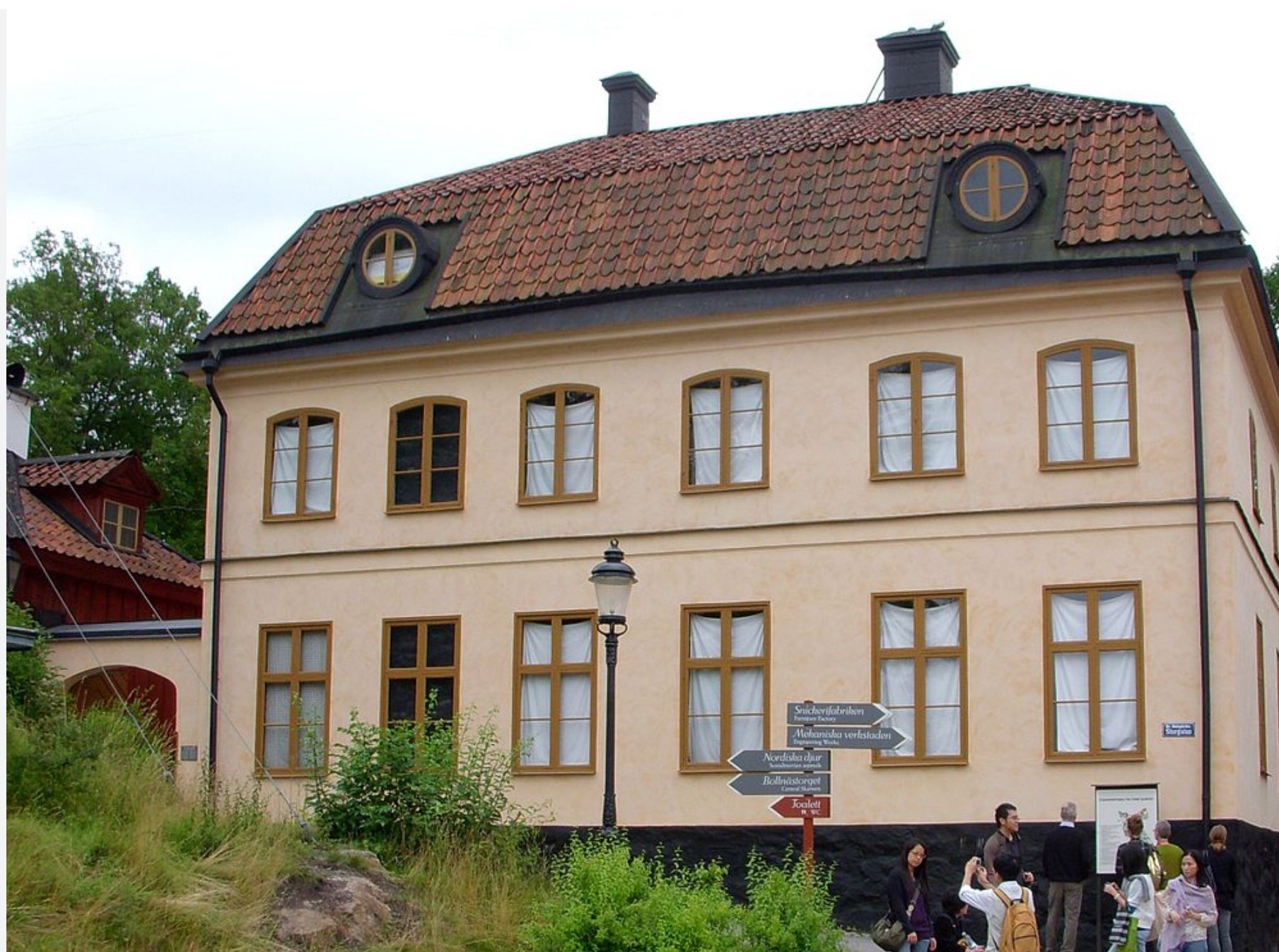 TOTTIE
family residence, moved to Skansen Museum, Stockholm ... Thomas TOTTIE b.1664
Sudbury, Suffolk, England, moved to Jedburgh, Border Country, North of Britain,
moved to Stockholm, Sweden 1688, the year that William of Orange deposed King
James II of England, d.1724 Stockholm, Sweden
TOTTIE
family residence, moved to Skansen Museum, Stockholm ... Thomas TOTTIE b.1664
Sudbury, Suffolk, England, moved to Jedburgh, Border Country, North of Britain,
moved to Stockholm, Sweden 1688, the year that William of Orange deposed King
James II of England, d.1724 Stockholm, Sweden
I predict the TOTTIE line is FGC2502,Y2967+ Branch, match 750 years ago c.1274AD.
Sons Samuel, Charles and William had major businesses in Sweden, where the family
line still lives today.
TOTTIE family likely originated Sudbury, Suffolk, or Leeds-Cheshire England.
DANELL family, Sweden ... HARTLEY > DANELL match 750 years ago c.1274 AD : Tested FGC2502,Y2967 > FTA32389+
ancestors on the male ANDERSSON>LANDGREN family line : Samuel Torsson LANDGREN 1733-1809 > Lars SAMUELSSON 1755- [see charts below]
DANELL > KELDORF match 510 years distant from one another, Sweden > Denmark or Denmark > Sweden ??


My YDNA Tree and another ALSTON family branch: Updated April 2025
Z140 > Z141 > Z4724/CTS6739 > F2642/S2169 > Y1843/S2158/FGC2491 >
I can now better date the SNP markers on my tree:
Y1843/S2158/FGC2491 to c.870-960 BP/years ago = c.1066 AD-1155 AD [Anglo-Vikings-Normans]
F2642/S2169 to c.1050-1140 BP/years ago = c.885 AD - 975 AD [Anglo-Angles-Vikings]
There is a branch off the Z140 > Z141 > Z4724/CTS6739 part of my tree that is A23351/CTS9999 [an SNP marker I discovered] that includes the families
ALSTON, STRODER ... I believe these ALSTONS were descended from
Sir William ALSTON [1537-1617] > Sir Edward ALSTON [1507-1591] > William ALSTON [1480-1564] at Saxham Hall, Newton, Suffolk, England
ancestors of Colonel John ALSTON [1670-1758] Chowan, North Carolina USA "Sons of the Revolution"
and a branch off A23351 that includes the families
SNYDER, MEYER, MOYER, MYERS, all German descent
I can thereby date the SNP Z4724/CTS6739 to c.1200 BP/years ago = c.825 AD [Anglo-Angles-Vikings]
and the SNP A23351/CTS9999 to c.900 BP = c.1125 AD [Anglo-Viking-Normans]
Earlier Sweden: Tested FGC2502,Y2967 > F3635+ Branch [see chart above], negative for FGC2500,FGC2492,FGC2494,Y2963
[The LUNDSTROMS]
BOMAN Family, Sweden [no early ancestor recorded]
Marcus ERIKSSON, Boviken, Sweden c.1549-1569
Jöns ERSSON, Drängsmark. Sweden c.1539-1546
Per JONSSON, Storkåge, Sweden c.1539-74
Jon OLOFSSON Kattisträsk, Sweden c.1669-1701
Olof OLOFSSON, Drängsmark, Sweden c.1664-1736
Two other matching surnames are KARLSSON and MOORE, no further details at present.
Finland:
Antti TOIVONEN [aka JOHANSSON/JUDINSALO] Luhanka, Finland ... HARTLEY > TOIVONEN match 720 years ago c.1304 AD : Tested FGC2502,Y2967+
DANELL > TOIVONEN [JOHANSSON] match 390 years distant from one another, so TOIVONEN line likely descended from DANELL line, Sweden > Finland
Anglo-Scandinavian matches ?
I do think the above matches between my HARTLEYs from the North Pennines, the NIELSENs, KELDORFs from Denmark, the DANELLs from Sweden, the JOHANSSONs from Finland, and the ALSTONs from the North Pennines, create a good debate between two theories ... Angles from the North Pennines settling in Scandinavia ? and vice-versa, Scandinavians 'invading' the North of England and passing on their YDNA ? I think the jury is out ... my YDNA paternal line is 100% NW England, I have no research that shows I have any Scandinavian YDNA, so I find it difficult to believe any verdict other than my ancestors, the Angles, settled in Scandinavia. But I am open to discussion ... the whole point of testing DNA is to get answers to questions about missing traditional genealogy and unwritten history.
TOTTIE family [above] likely originated Leeds-Cheshire area or Sudbury, Suffolk,
England. Thomas TOTTIE emigrated to Stockholm, Sweden 1688 at a time of political
upheaval in Britain. There is no indication that TOTTIE was a Scandinavian family
returning to their homeland, so possible proof that English families settled
in Scandinavia and took I-Z140 > F2642 > FGC2502,Y2967 YDNA with them.
Conclusion so far ...
so far, I have YDNA matches with Swedish familes dated back over 1,000 years, I have a match with Alston and SBT-A1 Iceland dated 875 AD, matches with Swedish, Danish and Finnish families dated back to 1150 AD, a match with PRATT/PREAUX dated back to 14thC to 16thC, and a match with the HARDWICKs dated 1575 AD
I have traced my HARTLEYs back to 18thC NW England, I have the above genetic matches to 1575 AD, but I can't bridge the gap ... I still need genetic matches dated 1575 AD to 1800 AD, I still need paper records that confirm the HARTLEY line from 1575 AD to 1800 AD
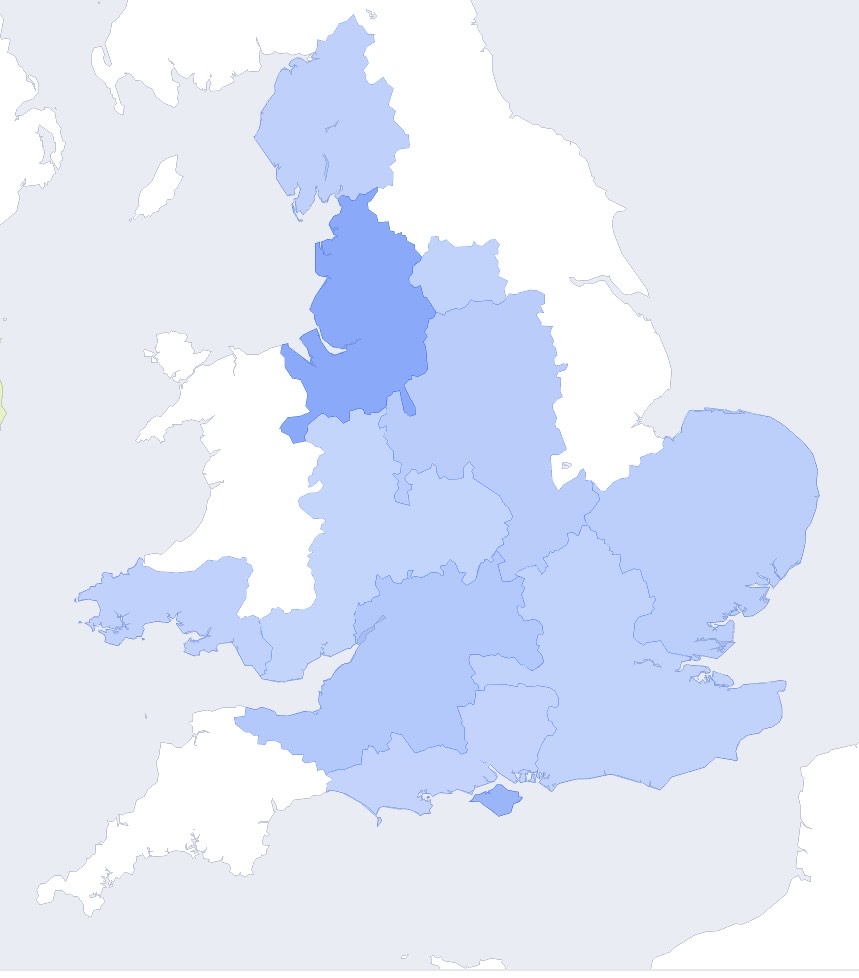 My
atDNA, YDNA, mtDNA, and 72,000+ person strong Family Tree, all point to my ancestry
being Paternal 100% NW England [Darker Blue and surrounding counties on the
Map], and Maternal 100% all of the marked Counties [all Blue Areas on the Map]
My
atDNA, YDNA, mtDNA, and 72,000+ person strong Family Tree, all point to my ancestry
being Paternal 100% NW England [Darker Blue and surrounding counties on the
Map], and Maternal 100% all of the marked Counties [all Blue Areas on the Map]
So I am most definitely 100% Native English
William Hartley 2025
Research into my Ancient DNA ...
My 'Viking' Index is 70% ... that means that my DNA is more similar to 'Viking' DNA than 70% of most people. Almost 500 8thC to 11thC ancient samples were used for analysis, taken from almost 100 Viking burial sites across NW Europe. Four distinct 'Viking' populations were identified: Norwegian ... Swedish/Danish ... British/N Atlantic ... East European.
My DNA sample had most similarity with East European 'Rus Viking' aka 'Varangians'. The Norse Rus were described as "tall, blonde and ruddy"
The 9thC Rus [Old Norse: Men Who Row] were British/Scandinavian Norse tribes who founded Norvgorod, and took control of Kiev, Ukraine in 882 AD, creating the culturally advanced country of Kievan Rus by 885 AD, a huge area stretching from the Baltic Sea to the Black Sea, taking in land now part of Belarus, Ukraine and Russia. The Rus had sewage systems, wooden pavements, laws, and women's property and inheritance rights. The Rus partnered the Byzantine Empire, creating new trade routes, initially for furs, beeswax, honey and slaves, for silk fabrics, spices, wine and fruit. The Rus adopted Eastern Christianity. Weak leadership caused Kievan Rus to begin to disintegrate in the 11thC, the economy shattered, and it fell to the Mongols in the 13thC.
My Neanderthal and Denisovan DNA ...
Having analysed my genome for Neanderthal and Denisovan DNA, my results show I have:
1.96% Neanderthal DNA with closest match to DNA discovered in remains from Mezmaiskaya Cave 1, Russia, near the Kiik-Koba and Buzdujeni Caves, Crimea, in the North Black Sea area, remains dated c.65,000 to 43,000 years ago. Neanderthal had lived there for over 400,000 years. We know that Neanderthal interbred with Homo Sapiens, and that some of the Neanderthal genes I inherited [positive], or didn't inherit [negative], are associated with the immune system [for which I am positive], body fat, blood circulation, protein-calorie malnutrition, sleep patterns [negative], the skin's sunburn reaction to the sun, and freckles [positive] and hair colour [negative], and metabolism, and may have improved survival in times of starvation and illness. Neanderthals were adept at stone tool creation, rope and fabric manufacture, creating and controlling fire for heating/cooking, and using plants for medicine. They were artistic, creating ornaments, paintings, and rock-art.
0.22% Denisovan DNA ... Denisovan and Neanderthal shared genetic ancestors until just under 400,000 years ago, and likely went extinct 15,000 years ago. Traits passed town to Homo Sapiens include the ability to live in mountainous terrains at high altitudes, for which I am negative. Compared with Neanderthals, a lot less is known about Denisovans because far fewer useful remains have been discovered and analysed.
Heidelberg: a native European, they existed before Neanderthals, between 800,000 and 100,000 BP ... A000-T ... Test A8835 position 7760193 A to G
[Work in Progress - William Hartley - 2024]
How to start looking for your thousands of 'hidden' family tree members, using DNA testing ...
My
serious interest in using DNA testing, to grow a family tree, started in 2005.
Then, there were few labs, very few SNPs, and hardly anyone had tested their
genome because the costs meant testing was reserved for the super-rich or for
research labs, only.
I took my first DNA tests in Y-37 STRs-only and mtDNA, my haplogroup had just
a handful of known SNPs. AutosomalDNA [atDNA] tests didn't exist. I created
a basic Y-37 Tree and later much improved it with a Y-67 and then a Y-111 Tree.
As YSNPs were discovered, I merged my Y-67/111 Trees into a YSNP Tree. By 2010-2012
I had created a Haplogroup Z140 Tree based on my project members' YSTR results.
I knew then that the future was the merger of Genealogy and Genetics, to merge
my traditional family tree with DNA test results, adding matches to my tree
to grow branches.
These were my suggestions, then, on 'How to ...' but over time, I have far more tips, now ... I hope they help you understand the reason why and how you should be testing your DNA, to find thousands of 'hidden' members of your family tree.
Test or register at as many reputable labs that holds a large amount of data as you can afford ... in my experience, labs including FamilyTreeDNA, MyHeritage, LivingDNA, AncestryDNA all do a great job, and have different member-base of data. Each lab will produce a list of matches for you, a list that will differ from other labs, so your aim is to find as many matches as possible. The more matches, the bigger and faster your tree will grow. Once you test at one lab, see if you can just transfer your paid-for results file to as many of the other labs as possible, that way the transfer costs are a lot less than testing separately at each lab. That saves not just money, but time ... it is quicker for a lab to transfer in a previous result than it is for them to do the test themselves, plus there are other considerations such as shipping costs and turnaround time. Register at other non-lab free data-comparison sites, such as GedMatch. Don't share your data file with people you don't know or trust, especially on chat groups.
Sort your best/biggest-cM AutosomalDNA [atDNA] matches into shared-match clusters, create a spreadsheet and place them on that ... then you will know which branch of your family tree your matches belong to. Make it easier to identify unknown matches, trace as many of your family lines as you can, down to the present day, even if the branches belong to matches ... the more spade work you can do, the easier it will be to merge your branches with your matches. If your matvhes won't do the work, do it yourself. Labs tools such as 'AncestryDNA ThruLines' can help with this process. Other labs have similar tools, so joining several labs means you can share in all their data and tools. If you can identify the person from their user name, start tracing their tree back in time using birth, marriage and death indexes, the 1939 Register, Google search for online family trees, check Facebook etc, electoral registers, 192.com, and other resources for researching where people lived, and who with, within the past 100 years. You can often open a free account and just use free indexes, there's no need to open expensive subscriptions. Use your money to pay for tests that will increase your knowledge, not for subscriptions to profiteering sites. Check out My Heritage, Find My Past, Ancestry, FreeBMD, UK Gov Certificates Birth/Death searches, etc. Go to your local LDS family centre or local library, they're all free, and other researchers, there, can teach you a lot of useful short-cuts. and tips.
Create 'floating branches'on your family tree, based on the family trees of the matches you cannot yet join to your own family tree. You may be able to join them at a later date, once you have more and more matches, over time.
Test
as many family members as you can afford, or ask around and see if aunts, uncles,
siblings, cousins, want to test DNA and create their own family tree. The more
family members who test, the more 'hidden' matches you will find. With YDNA
[male-to-male] and mtDNA [female-to-female/male] you will find markers are passed
down a line 'complete', the only differences will be the personal markers that
lines that branch off your line, inherit. For example, your grandfather will
have passed down all his YSNPs to each of his sons, and the sons to each of
their sons. However, you will pass on personal Variant YSNPs to your sons and
grandsons, not shared by your brothers and nephews. And they will have their
own personal Variant SNPs that you don't share.
Be aware, that not all AutosomalDNA [atDNA] is passed down to each family member,
and in the same quantities of cM... some family members will get identical atDNA,
some smaller amounts of cM, or none, some larger amounts, or unique amounts.
Labs use different algorithms and staff differ in their expertise. That's why
you should test at as many labs as you can afford. It's not that some results
may differ because DNA testing is not accurate ...in the right hands, testimg
is accurate, results are absolute proof ... but some labs and staff use better
equipment, better techniques, and have better understanding and knowledge.
Bear in mind many of your thousands of matches will be ancient matches and so you likely won't be able to put a name to that person. Family surnames only really came into common use in the 15thC-16thC, and the further back in time you go, the harder it is to find paper records that will relate to your genetic matches. If you are lucky, you will be able to trace your family tree back 10, 15, or 20 generations, using both genetic matches and records such as births, marriages, deaths, censuses, and electoral lists.
Make sure your testing lab has an up-to-date spit sample in storage. Your sample can last 10-20 years, but if you're getting on in years, send in another sample that can be used well into the future.
Test
YDNA [male-to-male] if you're a man, at least to Y-37 STRs, followed by haplogroup
and branch SNPs, or better still test Y-111 and then go on to test a Y-genome
product such as FTDNA Big-Y-700 for a full test result including personal Variant/YSNPs.
Men and women should all test autosomalDNA [atDNA] that FTDNA Family Finder,
My Heritage, AncestryDNA, LivingDNA etc offer fairly cheaply [usually $39 to
$79]. Watch out for seasonal offers around Christmas, Easter, Mother and Father's
Days, etc. Also test mtDNA if you're interested in tracing and confirming your
mother's female-to-female line.
If you know your predicted haplotype, and branch, there are single YSNP test labs available such as YSEQ.net that charge less than $20 per YSNP, so you don't have worry about not being able to afford testing, there are tests to cater for all needs and funds.
In summary, test, test, test ... as time goes on, better, more improved tests, can offer more results, that can offer more matches, that can in turn grow your family tree to over 50,000 kin, like mine has.
Much earlier research by William Hartley [pre-2014]:
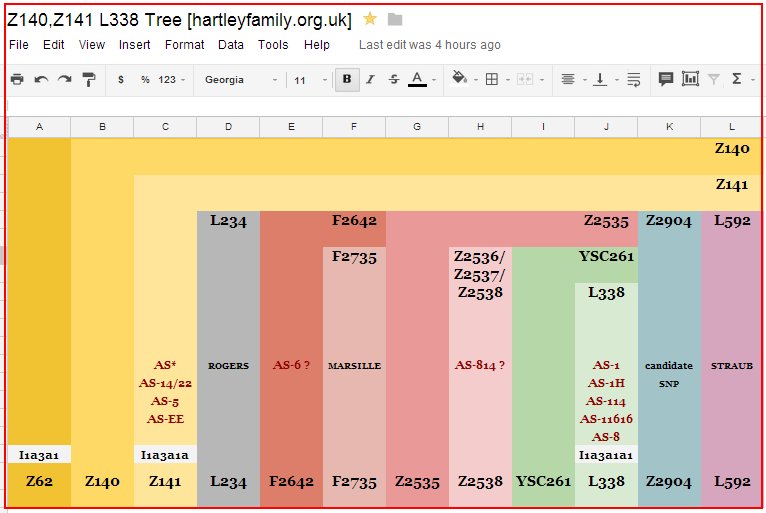
That MRCA was likely English-Danish-Swedish, of an Angle tribe, possibly a King or Tribal Chief. He was descended from a small male lineage, a marginal tribe descended from indigenous North European Natives [Haplogroup I and Haplogroup I1] that included just half-a-dozen or so males, who lived 24,000 through to 4,500 years ago.
The HARTLEYs with Haplo-I1 Z140,Z141 DNA would have had close links with Scandinavia and the North Coast of Germany, the Baltic and the Low Countries. They would have traded food and goods, and would have exchanged culture, ideas, beliefs and language. Their families would have been inter-connected by cross-marriages.
They had close links with Angles, and later Normans, particularly in Kent and the South East of England, East Anglia, North East England, Yorkshire, and Lancashire and Cumbria in the North West of England.
By
the mid-18thC they had settled near Blackburn-Darwen, at the foot of the
Pendle Hills, Lancashire, at the dawn of the industrial revolution. Where
the HARTLEYs were living during the 'missing' 2,300 years [2,500BP to mid-18thC]
is not possible to determine, though, in time, further research of DNA and paper
records may solve the mystery.
In 1954, the ancient remains of an Icelander was found in N.Iceland. Recent analysis discovered he had Hg-I1-M253>Z140>F2642+ Branch YDNA.
His ancestors were William Hartley’s Hartley family ancestors. Although the Icelander lived c.870-930 AD and was born in Iceland, scientists think it likely his ancestors were English [re: Isotopic Tests]. More research is continuing on this important find.
The present-day location of the Haplo-I1 Z140,Z141+ F2642+ S2158+ subclade in
the North of England has links with the historical location of Angles [the English],
Northmen known as the Danes, [aka Danish Vikings] and Anglo-French Normans.
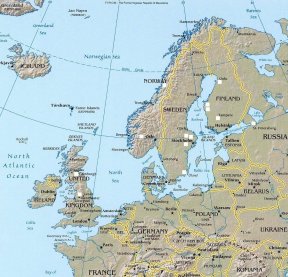 The closest present day DNA matches of males with the same Z140 YDNA confirm
the geographical area of the British Isles, Norway, Sweden, Finland and North
Germany. [map to be updated]. None of the other matches
has the surname HARTLEY. [Locations shown on map above; FINLAND:
Pedersöre Vaasa, Oulu and Tampere SWEDEN:
Karlskrona, Vastmanland, Kopparberg, Värmland and Vasttarna NORWAY: Nordland
and Telemark RUSSIA: St Petersburg [close to Finland] GERMANY: Rugen. SCOTLAND:
Stirlingshire. ENGLAND: Leeds, Yorkshire and Blackburn, Lancashire, plus a couple
in the USA who likely came from England
The closest present day DNA matches of males with the same Z140 YDNA confirm
the geographical area of the British Isles, Norway, Sweden, Finland and North
Germany. [map to be updated]. None of the other matches
has the surname HARTLEY. [Locations shown on map above; FINLAND:
Pedersöre Vaasa, Oulu and Tampere SWEDEN:
Karlskrona, Vastmanland, Kopparberg, Värmland and Vasttarna NORWAY: Nordland
and Telemark RUSSIA: St Petersburg [close to Finland] GERMANY: Rugen. SCOTLAND:
Stirlingshire. ENGLAND: Leeds, Yorkshire and Blackburn, Lancashire, plus a couple
in the USA who likely came from England
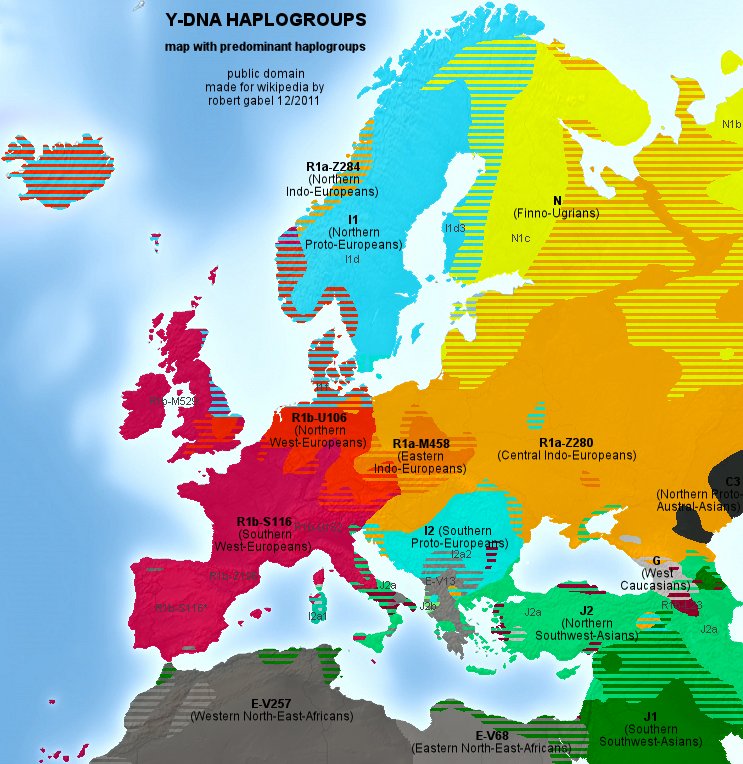 marked
blue on the map, Haplogroup I1 is native to, and is found mostly in the
British Isles, Low Countries, Normandy, Scandinavia and Northern Baltic Germany,
where in places, it can represent over 50% of the population. [map
to be updated]. The greatest density of I1 can be found in two distinct
areas; to the North of Europe, in the British Isles, Low Countries, Norway,
Sweden, Finland, Denmark, Iceland, and Baltic Germany; and to the South,
at Bosnia and Herzegovina, Croatia and Sardinia as Haplogroup I2.
marked
blue on the map, Haplogroup I1 is native to, and is found mostly in the
British Isles, Low Countries, Normandy, Scandinavia and Northern Baltic Germany,
where in places, it can represent over 50% of the population. [map
to be updated]. The greatest density of I1 can be found in two distinct
areas; to the North of Europe, in the British Isles, Low Countries, Norway,
Sweden, Finland, Denmark, Iceland, and Baltic Germany; and to the South,
at Bosnia and Herzegovina, Croatia and Sardinia as Haplogroup I2.
[frequency of 50% in Satakunta, Finland; 40% in Western Finland;
35% in South West Sweden [Gotland] and Southern Norway; gradually decreasing
in Denmark and the North German Baltic.
I1 is the most common haplogroup in nearly all regions of Sweden. Within this
haplogroup, the regions did not show any deviation among themselves except for
the I1 haplotypes found in Värmland. This region differed significantly from
two Swedish regions and both the Saami and Österbotten I1 lineages. No other
Swedish region differed from the Saami or the Österbotten samples]
Haplogroup-I1 is found in all places associated with the ancient English-Germanic
tribes and the Vikings. During the Nordic Stone Age, pre-I1 and I1 people were
part of the successive Hamburg
culture [15,500-13,000BP] Ahrensburg
culture [13,000-11,500 BP], Maglemosian
culture [11,500–8,000BP], Kongemose
culture [ca. 8,000–7,200BP], Ertebølle-Ellerbek
culture [7,200-5,950BP], pre-Bronze Age Funnelbeaker
culture [6000-4700BP]; all cultures of Reindeer Hunters. Their settlements
were in proximity to the rim of the Ice, and the landscape was tundra with bushy
arctic white birch and rowan. The most important prey was the wild reindeer,
and the hunters ranged areas as large as 100,000 km2 [40,000 sq miles]. The
Corded Ware period [5200-3800BP] marks the arrival of the Indo-European R1a
people from the Ukrainian steppes.
I1 is identified by at least 15 unique mutations, which indicates that this lineage has been isolated for a long period of time, or experienced a serious population bottleneck. The first mutation that gives rise to subclade Haplo-I1 appeared 10,000-8,000BP, somewhere in the far northern part of Europe, possibly England, possibly a King or Tribal Chief. His descendants are primarily found among the English-Germanic populations of Northern Europe and the bordering Uralic and Celtic populations. They were nomadic hunter-gathers and fishermen, later settled farmers, growing wheat and barley and keeping sheep, goats, pigs and cattle; they hunted Reindeer and Deer in forests and wetlands and they domesticated the wolf. Remains of some of them have been found on the Island of Rügen, home of the Mother Earth Goddess, HERTHA. The Nordic Bronze Age [also Northern Bronze Age] is the name given by Oscar Montelius to a period and a Bronze Age culture in Scandinavian pre-history, 3,700-2,500BP, with sites that reached as far east as Estonia. I1 is the origin of the gene allowing adults of Northern European descent to digest lactose. The Mother Earth Goddess HERTHA was widely worshipped by them [see Nerthus/Heorotha/Hertha - Name Page]. Evidence of the veneration of a Mother Goddess, representing the Earth, survived among the Angles of Denmark and the English. The megalithic structures [8,000-3,200BP] of Europe [like Stonehenge] were likely built in part by I1 people. Bronze Age rock carvings contain some of the earliest depictions of well known Gods from later Norse religion. A common figure in these rock carvings is that of a male figure carrying what appears to be an axe or hammer; most likely this represents Thor. Other male figures are shown holding a spear, representing Odin or Týr, both gods are associated with this weapon. A figure holding a bow is probably Ullr. It is thought these later male Gods became more popular in later Norse religion, than the earlier female Mother Goddess, HERTHA.
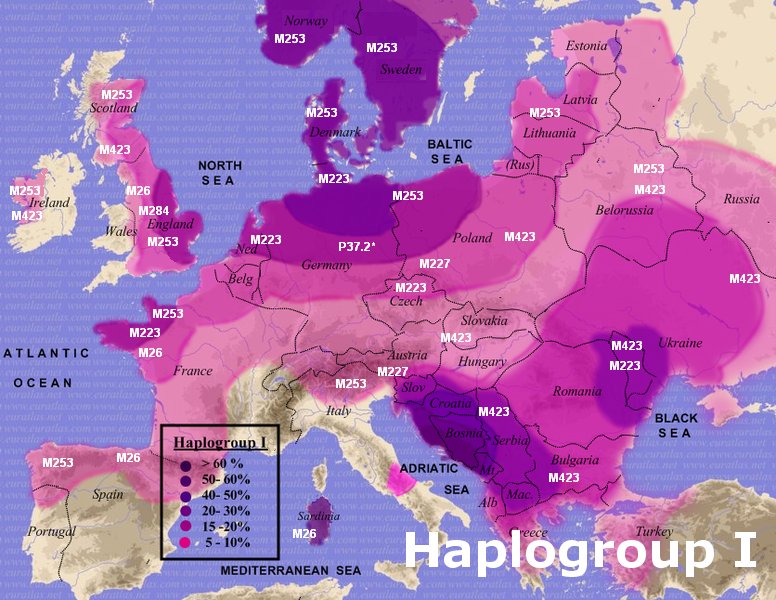 Haplogroup I arose in Europe,
and is almost non-existent outside of Europe. [map to be updated]
It originated around 24,000BP, at the start of the Last Great Ice Age, and is
indigenous Native European DNA [see Multiregional theory below]; Native
Europeans were independent of Africa over many hundreds of thousands of years,
bred with co-native cousins 'Homo Neanderthalensis' [aka Neanderthal Man], and
have distinct traits such as light hair and eye colour, as shown in the following
maps:
Haplogroup I arose in Europe,
and is almost non-existent outside of Europe. [map to be updated]
It originated around 24,000BP, at the start of the Last Great Ice Age, and is
indigenous Native European DNA [see Multiregional theory below]; Native
Europeans were independent of Africa over many hundreds of thousands of years,
bred with co-native cousins 'Homo Neanderthalensis' [aka Neanderthal Man], and
have distinct traits such as light hair and eye colour, as shown in the following
maps:
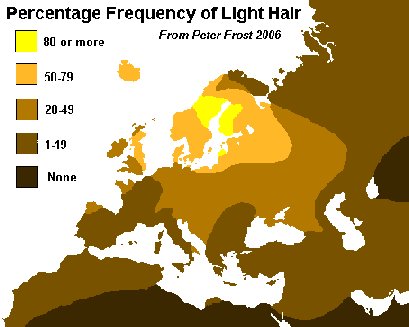
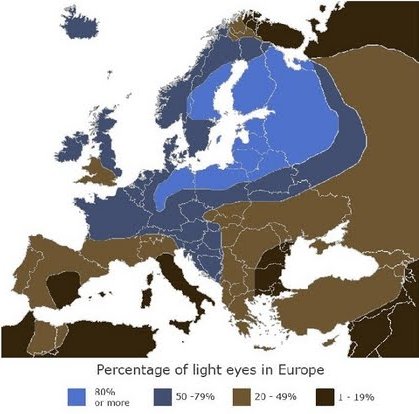
Haplogroup I descended from more ancient indigenous Native Europeans like Cro-Magnon, Neanderthal, Heidelberg and Homo antecessor.
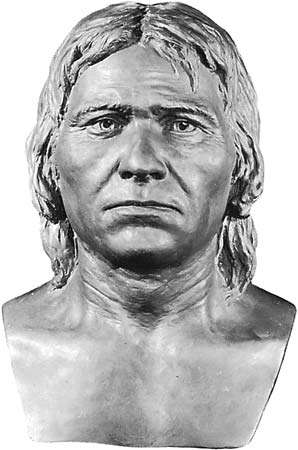 Cro-Magnon: ancestral to the current population of
Europe and lived as far back as 35,000BP. They had the same high forehead, upright
posture and slender skeleton as modern humans but were more robust and had a
slightly larger cranial capacity. Cro-Magnon's co-existed with and absorbed
the older Neanderthals.
Cro-Magnon: ancestral to the current population of
Europe and lived as far back as 35,000BP. They had the same high forehead, upright
posture and slender skeleton as modern humans but were more robust and had a
slightly larger cranial capacity. Cro-Magnon's co-existed with and absorbed
the older Neanderthals.
 Homo Neanderthalansis: earlier European dating back between 600,000 and
25,000BP. They hunted Bison, Deer, Gazelles and wild Horses that flourished
in Europe, and existed until long after the Last Great Ice Age. They had limbs
that were shorter and stockier than those of modern Europeans. 'Neanderthal
Man' bred with modern Europeans, possibly with Cro Magnon. Modern Europeans
share between 2% and 9% of Neanderthal DNA.
Homo Neanderthalansis: earlier European dating back between 600,000 and
25,000BP. They hunted Bison, Deer, Gazelles and wild Horses that flourished
in Europe, and existed until long after the Last Great Ice Age. They had limbs
that were shorter and stockier than those of modern Europeans. 'Neanderthal
Man' bred with modern Europeans, possibly with Cro Magnon. Modern Europeans
share between 2% and 9% of Neanderthal DNA.
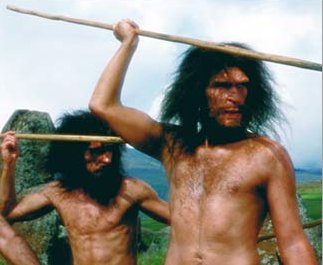 Heidelberg: a native European, they existed before Neanderthals, between
800,000 and 100,000BP. Like Cro-Magnon, Heidelberg Man had a larger cranial
capacity than modern Europeans; they were tall, 1.8 m [6 foot] on average, and
more muscular. They hunted wild Deer, Elephants, Rhinoceroses and Horses, built
shelters, and had more advanced tools such as spears and axes; they built boats
and were able to travel across open seas to inhabit islands such as Crete. They
had an advanced form of behavior, buried their dead, offered gifts and had a
primitive form of language. Heidelberg Man inhabited further north as they could
withstand much colder climates. They mastered fire and built hearths, to keep
warm, cook and ward off preditors.
Heidelberg: a native European, they existed before Neanderthals, between
800,000 and 100,000BP. Like Cro-Magnon, Heidelberg Man had a larger cranial
capacity than modern Europeans; they were tall, 1.8 m [6 foot] on average, and
more muscular. They hunted wild Deer, Elephants, Rhinoceroses and Horses, built
shelters, and had more advanced tools such as spears and axes; they built boats
and were able to travel across open seas to inhabit islands such as Crete. They
had an advanced form of behavior, buried their dead, offered gifts and had a
primitive form of language. Heidelberg Man inhabited further north as they could
withstand much colder climates. They mastered fire and built hearths, to keep
warm, cook and ward off preditors.
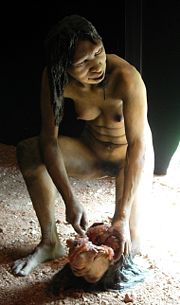 Homo antecessor: dating from 1.2 million to 800,000BP, they are the earliest
known indigenous Native Europeans, a direct ancestor of Haplogroup I1
Europeans, Cro-Magnon, Neanderthal and Heidelberg Man. They were up to 1.8m
[6 foot] tall and of similar build to Heidelberg Man but had a smaller cranial
capacity. Homo antecessor flint artifacts have been found as widespread as Northern
Spain and Norfolk in England. There were no caves in Norfolk so primitive huts
would have been constructed for shelter. Hunting would have included Deer, Giant
Elk, Horses and Mammoths. Other wildlife at that time included Elephants, Rhinos,
Sabre-toothed Cats and Hyenas.
Homo antecessor: dating from 1.2 million to 800,000BP, they are the earliest
known indigenous Native Europeans, a direct ancestor of Haplogroup I1
Europeans, Cro-Magnon, Neanderthal and Heidelberg Man. They were up to 1.8m
[6 foot] tall and of similar build to Heidelberg Man but had a smaller cranial
capacity. Homo antecessor flint artifacts have been found as widespread as Northern
Spain and Norfolk in England. There were no caves in Norfolk so primitive huts
would have been constructed for shelter. Hunting would have included Deer, Giant
Elk, Horses and Mammoths. Other wildlife at that time included Elephants, Rhinos,
Sabre-toothed Cats and Hyenas.
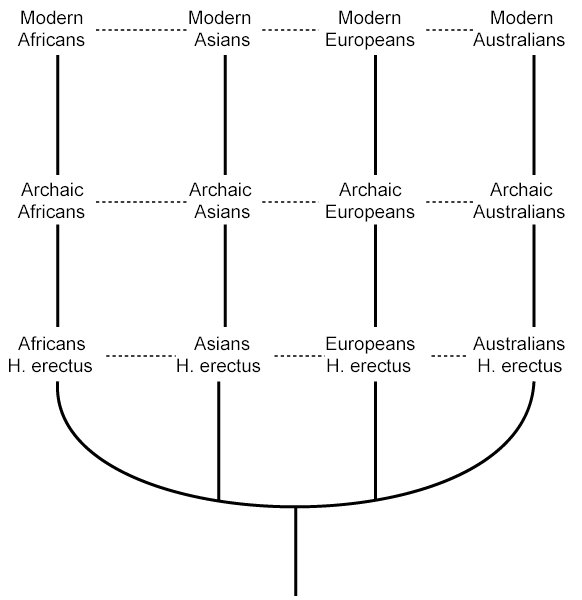 Fossil and genomic data supports the hypothesis of a Multiregional
origin of modern humans. The gene flow and sexual reproduction between modern
and ancestral human population has not been ruled out; the 'Out of Africa' theory
is not a consensus view and many see it as flawed. Clearly, modern humans show
evidence of ancient
indigenous Native Europeans' traits, from
Cro-Magnon, Neanderthal, Heidelberg
and
Homo antecessor.
Fossil and genomic data supports the hypothesis of a Multiregional
origin of modern humans. The gene flow and sexual reproduction between modern
and ancestral human population has not been ruled out; the 'Out of Africa' theory
is not a consensus view and many see it as flawed. Clearly, modern humans show
evidence of ancient
indigenous Native Europeans' traits, from
Cro-Magnon, Neanderthal, Heidelberg
and
Homo antecessor.
 Present-day geographical locations of people with matches to my Haplo-I1
Z140 STR DYS19=16
Present-day geographical locations of people with matches to my Haplo-I1
Z140 STR DYS19=16
FINLAND: Pedersöre Vaasa, Oulu and Tampere
SWEDEN: Karlskrona, Vastmanland, Kopparberg, Värmland and Vasttarna
NORWAY: Nordland and Telemark
RUSSIA: St Petersburg [close to border with Finland]
GERMANY: Rugen [likely a Norse settler]
SCOTLAND: Stirlingshire
NORTH
OF ENGLAND: in particular Yorkshire and Lancashire
Famous People tested, results showing YDNA Haplogroup I1-M253 include:
[1]Birger JARL aka Birger MAGNUSSON [c. 1210 – 21 October 1266] [updated Dec 2011] New DNA currently testing: Birger is to be confirmed]
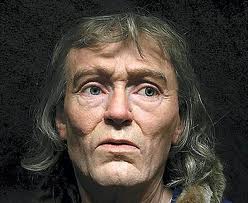 traditionally
attributed to have founded the Swedish capital, Stockholm, around 1250, and
the consolidation of Sweden as a state. He was a member of the Swedish Royal
House of Sverker [on his mother's side], a prominent member of the House
of Folkung aka the House of Bjälbo. Birger became the defacto King of Sweden
and his line produced several Kings of Sweden and Norway from 1250-1364. He
married the sister of King Eric XI of Sweden; she died in 1254 and in 1261 Birger
married the widow of King Abel of Denmark, Matilda of Holstein. Birger died
on 21 October 1266, at Jälbolung in Västergötland. His grave in at Varnhem Abbey.
traditionally
attributed to have founded the Swedish capital, Stockholm, around 1250, and
the consolidation of Sweden as a state. He was a member of the Swedish Royal
House of Sverker [on his mother's side], a prominent member of the House
of Folkung aka the House of Bjälbo. Birger became the defacto King of Sweden
and his line produced several Kings of Sweden and Norway from 1250-1364. He
married the sister of King Eric XI of Sweden; she died in 1254 and in 1261 Birger
married the widow of King Abel of Denmark, Matilda of Holstein. Birger died
on 21 October 1266, at Jälbolung in Västergötland. His grave in at Varnhem Abbey.
Valdemar BIRGERSSON [1239-1302] eldest son of Birger JARL. Valdemar was King of Sweden from 1250-1275, lord of parts of Gothenland until 1278.
Magnus III aka Magnus Ladulås [1240-1290] second eldest son of Birger JARL, was King of Sweden from 1275-1290 after deposing his brother Valdemar Birgersson. Though not independently tested, his son Magnus IV Eriksson of Sweden aka Magnus VII of Norway would belong to the I1 haplogroup by extension from Magnus Ladulås. Died c.1290.
Eric BIRGERSSON, born 1250, Duke of Småland [third son].
Benedict BIRGERSSON, Duke of Finland, born 1254, Bishop of Linköping [fourth son].
and Gregers [Gregory] BIRGERSSON [died January 15, 1276], buried in Minoriterna a monastery in Uppsala. Gregory was a Swedish knight and an illegitimate son of Birger Jarl. He was born out of wedlock by an unknown woman.
It can be assumed all the following members of the House of Bjälbo are Haplogroup-I1, DNA passing father to son:
Valdemar I of Sweden [1239–1302]
Magnus III of Sweden [1240-1290]
Birger I of Sweden [1280-1321]
Valdemar, Duke of Finland [1280s-1318]
Magnus IV of Sweden [1316-1374]
Eric XII of Sweden [1339-1359]
Haakon VI of Sweden & Norway [1340-1380]
Olaf II of Denmark & Norway [1370-1387]
other Famous People with Haplogroup I1 are:
[2]
Edmund RICE [b.c.1594 nr.Stanstead Suffolk, England – 3 May 1663 at Marlborough,
Massachusetts USA]
predicted Subclade I1-L22 > P109 to be confirmed [from research
by William Hartley, September 2013] I-P109>S11056>S14887>S8175+ Branch
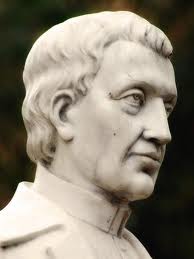
British Isles-Norse/Scandinavian] reconstructed YSTR haplotype:
DYS/Alles: DYS19 14 DYS 381i 12 DYS382ii 28 DYS385a 14 DYS385b 14 DYS388 14 DYS390 23 DYS391 10 DYS392 11 DYS393 13 DYS395a 15 DYS395b 15 DYS406s1 9 DYS413a 25 DYS413b 25 DYS425 12 DYS426 11 DYS436 12 DYS437 16 DYS438 10 DYS439 11 DYS441 16 DYS442 12 DYS444 13 DYS445 11 DYS446 13 DYS447 23 DYS448 18
DYS/Alles: DYS449 28 DYS450 8 DYS454 11 DYS455 8 DYS456 14 DYS458 15 DYS459a 8 DYS459b 9 DYS460 10 DYS461 12 DYS462 13 DYS463 21 DYS464a 12 DYS464b 14 DYS464c 15 DYS464d 16
DYS/Alles: DYS472 8 DYS481 25 DYS487 12 DYS490 12 DYS492 12 DYS511 10 DYS520 20 DYS531 11 DYS534 15 DYS537 11 DYS557 15 DYS565 11 DYS568 11 DYS570 20 DYS572 11 DYS576 17 DYS578 8 DYS590 8 DYS594 10 DYS607 14 DYS617 13 DYS635 23 DYS640 11 DYS641 10 CDYa 38 CDYb 39 Y-GATA-A10 15 Y-GATA-H4 11 Y-GGAAT-1B07 11 YCA-IIa 19 YCA-IIb 21
many descendants of Edmund RICE were famous people, including:
Edgar Rice BURROUGHS, [1 September 1875 Chicago Illinois USA - 19 March 1950] author and creator of the Tarzan character
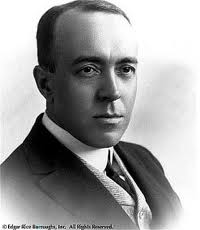
John Calvin COOLIDGE, [4 July 1872 Plymouth Notch, Windsor County, Vermont USA - 5 January 1933] 30th President of the United States
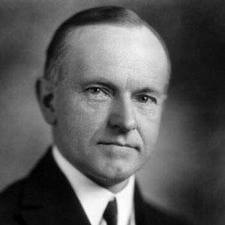
Elias HOWE, [9 July 1819 Spencer, Massachusetts USA - 3 October 1867] inventor of the first practical sewing machine
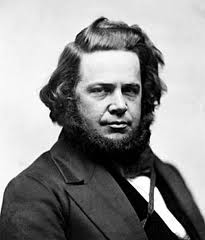
[3] Leo [Lev Nikolayevich] Tolstoy, [9 September 1828 Yasnaya Polyana, Tula, Russia - 20 November 1910] Russian writer; 'War and Peace' etc.
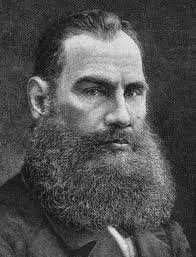
and finally:
[4]
Alexander HAMILTON [11 January 1757 Charlestown, Nevis, British West Indies
– 12 July 1804] confirmed by testing several descendants:
predicted Subclade I1-Z140+[04] A1374+ Branch. The YSNP, A1374, discovered
and registered by William Hartley [2013][from research by William Hartley,
September 2013]
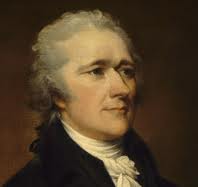 Alexander was the first United States Secretary of the Treasury, a Founding
Father, economist, and political philosopher. He was descended from the Scottish
laird Alexander Hamilton of Grange, Ayrshire. On 14 December 1780 when he married
into a wealthy colonial family; m. Elizabeth Schuyler, daughter of General Philip
Schuyler, and thus joined one of the richest military and most political families
in the state of New York [see ancestors below]
Alexander was the first United States Secretary of the Treasury, a Founding
Father, economist, and political philosopher. He was descended from the Scottish
laird Alexander Hamilton of Grange, Ayrshire. On 14 December 1780 when he married
into a wealthy colonial family; m. Elizabeth Schuyler, daughter of General Philip
Schuyler, and thus joined one of the richest military and most political families
in the state of New York [see ancestors below]
The Hamilton's are thought to have been descended from the Norman, Bernard
'The Dane' de Harcourt, a knight to King Robert 1 [the father of William
the Conqueror].
Defining markers: DYS447=22, DYS455=8, DYS439=12, DYS389i=13, DYS449=30, DYS607=15, DYS481=26, DYS446=12 [William Hartley]
Alexander's
YDNA test results include:
DYS/Alles: 393=13 390=22 19=14 391=10 385A=13 385B=14 426=11
388=14 439=12 389i=13 392=11 389ii=29 458=15 459a=8 459b=9 455=8 454=11 447=22
437=16 448=20
DYS/Alles:
449=31 464a=12 464b=14 464c=15 464d=15
DYS/Alles:
460=10 GATA-H4=10 YCAIIA=19 YCAIIB=21 456=14 607=15 576=16 570=19 CDYA=35 CDYB=38
442=12 438=10
.jpg) Alexander HAMILTON I1-Z140+[04] A1374+ Branch [researched September
2013 William Hartley] Birth: Jan. 11, 1755 Death: Jul. 12, 1804 Founding Father,
Statesman. The thirteen states after the Revolutionary War were weak and still
separate. Alexander Hamilton was the strong voice calling for a strong united
government with a new Constitution and then most instrumental in the formation
and convening of the Constitutional Convention at Philadelphia which established
the United States of America. He was born southeast of Florida on Nevis, a small
island making up the group in the Caribbean known as the West Indies. His mother
was unwed and the daughter of a doctor and his father a merchant. Family links:
Spouse: Elizabeth Schuyler Hamilton (1757 - 1854)*
Alexander HAMILTON I1-Z140+[04] A1374+ Branch [researched September
2013 William Hartley] Birth: Jan. 11, 1755 Death: Jul. 12, 1804 Founding Father,
Statesman. The thirteen states after the Revolutionary War were weak and still
separate. Alexander Hamilton was the strong voice calling for a strong united
government with a new Constitution and then most instrumental in the formation
and convening of the Constitutional Convention at Philadelphia which established
the United States of America. He was born southeast of Florida on Nevis, a small
island making up the group in the Caribbean known as the West Indies. His mother
was unwed and the daughter of a doctor and his father a merchant. Family links:
Spouse: Elizabeth Schuyler Hamilton (1757 - 1854)*
Children: [all male-to-male lines should be YDNA Subclade I1-Z140+[04]
[1] Philip Schuyler Hamilton (1783 - 1801)*[see below]
Angelica Hamilton Knott (1784 - 1857)*
[2] Alexander Hamilton (1786 - 1875)*[see below]
[3] James Alexander Hamilton (1788 - 1878)*[see below]
[4] John Church Hamilton (1792 - 1882)*[see below]
[5] William Stephen Hamilton (1797 - 1850)*[see below]
Elizabeth Hamilton Holly (1799 - 1859)*
[6] Phillip Hamilton (1802 - 1884)*[see below]
[1] Philip Schuyler HAMILTON Birth: Jan. 22, 1783
Albany Albany County New York, USA Death: Nov. 23, 1801 New Jersey, USA Eldest
and favorite son of Alexander Hamilton and his wife, Elizabeth Schuyler Hamilton.
Grandson of General Philip Schuyler. Philip was killed in a duel, on almost
exactly the same spot where his father was to be struck by Aaron Burr's bullet
three years later, in Weehawken, New Jersey. Hamilton never recovered from his
son's death and, when he and "Betsey" welcomed their eighth and last child after
Philip's death, they named the little boy Philip, in memory of his elder brother.
Philip is buried in Trinity Churchyard in lower Manhattan, not far from the
graves of his parents and the grave of his celebrated aunt, Angelica Schuyler
Church. Family links: Parents: Alexander Hamilton (1755 - 1804) Elizabeth Schuyler
Hamilton (1757 - 1854) Burial: Trinity Churchyard Manhattan New York County
New York, USA
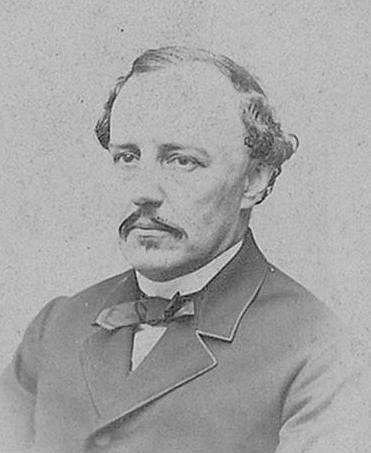 [2] Alexander HAMILTON,
Jr Birth: May 16, 1786 New York New York County New York, USA Death: Aug.
2, 1875 New York New York County New York, USA son of Alexander Hamilton & Elizabeth
Schuyler husband of Eliza P. Knox served in War of 1812 as the General in command
of The Old Sandy Fort Burial: Verified with church 25 Jun 2012 Family links:
Parents: Alexander Hamilton (1755 - 1804) Elizabeth Schuyler Hamilton (1757
- 1854) Spouse: Eliza P. Knox Hamilton (____ - 1871) Burial: Christ Church Episcopal
Churchyard New Brunswick Middlesex County New Jersey, USA Plot: #140, S.24.
W. 108. 3.
[2] Alexander HAMILTON,
Jr Birth: May 16, 1786 New York New York County New York, USA Death: Aug.
2, 1875 New York New York County New York, USA son of Alexander Hamilton & Elizabeth
Schuyler husband of Eliza P. Knox served in War of 1812 as the General in command
of The Old Sandy Fort Burial: Verified with church 25 Jun 2012 Family links:
Parents: Alexander Hamilton (1755 - 1804) Elizabeth Schuyler Hamilton (1757
- 1854) Spouse: Eliza P. Knox Hamilton (____ - 1871) Burial: Christ Church Episcopal
Churchyard New Brunswick Middlesex County New Jersey, USA Plot: #140, S.24.
W. 108. 3.
[3] James Alexander HAMILTON Birth: Apr. 14, 1788 New York New York County
New York, USA Death: Sep. 24, 1878 Irvington Westchester County New York, USA
son of Alexander & Elizabeth (Schuyler) Hamilton husband of Mary Morris During
the War of 1812: Served as Aide de Camp to General Morgan Lewis, US Army Family
links: Parents: Alexander Hamilton (1755 - 1804) Elizabeth Schuyler Hamilton
(1757 - 1854) Spouse: Mary Morris Hamilton (1790 - 1869) Children: Eliza Hamilton
Schuyler (1811 - 1863)* Fanny Hamilton Bowdoin (1813 - 1887)* Alexander Hamilton
(1816 - 1889)* Angelica Hamilton Blatchford (1819 - 1868)* *Calculated relationship
Burial: Sleepy Hollow Cemetery Sleepy Hollow Westchester County New York, USA
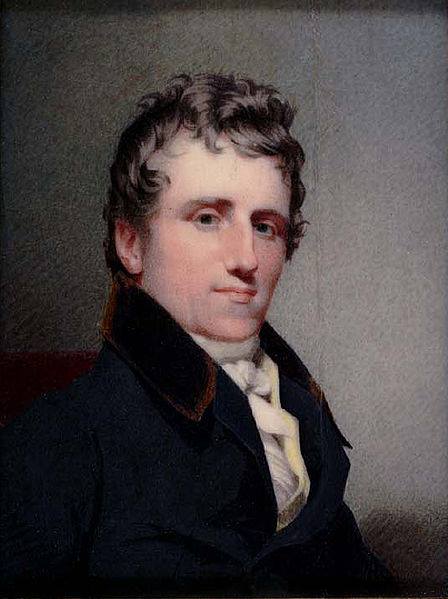 [4] John Church HAMILTON
Birth: Aug. 22, 1792 Pennsylvania, USA Death: Jul. 25, 1882 New Jersey,
USA son of Alexander Hamilton and Elizabeth Schuyler husband of Maria Eliza
Van Den Huevel War of 1812: Aide de Camp of Majgen Harrison, US Army Family
links: Parents: Alexander Hamilton (1755 - 1804) Elizabeth Schuyler Hamilton
(1757 - 1854) Spouse: Maria Eliza Van Den Huevel Hamilton (1795 - ____)* Children:
Alexander Hamilton (1815 - 1907)* Schuyler Hamilton (1822 - 1903)* Adelaide
Hamilton (1830 - 1915)* Elizabeth Hamilton Cullum (1831 - 1884)* *Calculated
relationship Burial: Sleepy Hollow Cemetery Sleepy Hollow Westchester County
New York, USA
[4] John Church HAMILTON
Birth: Aug. 22, 1792 Pennsylvania, USA Death: Jul. 25, 1882 New Jersey,
USA son of Alexander Hamilton and Elizabeth Schuyler husband of Maria Eliza
Van Den Huevel War of 1812: Aide de Camp of Majgen Harrison, US Army Family
links: Parents: Alexander Hamilton (1755 - 1804) Elizabeth Schuyler Hamilton
(1757 - 1854) Spouse: Maria Eliza Van Den Huevel Hamilton (1795 - ____)* Children:
Alexander Hamilton (1815 - 1907)* Schuyler Hamilton (1822 - 1903)* Adelaide
Hamilton (1830 - 1915)* Elizabeth Hamilton Cullum (1831 - 1884)* *Calculated
relationship Burial: Sleepy Hollow Cemetery Sleepy Hollow Westchester County
New York, USA
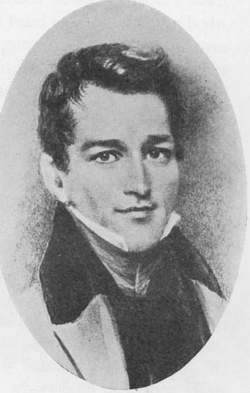 [5] William Stephen HAMILTON
Birth: Aug. 4, 1797 Death: Aug. 7, 1850 Son of Alexander Hamilton. Was exhumed
twice and buried three times. Family links: Parents: Alexander Hamilton (1755
- 1804) Elizabeth Schuyler Hamilton (1757 - 1854) Burial: Sacramento City Cemetery
Sacramento Sacramento County California, USA
[5] William Stephen HAMILTON
Birth: Aug. 4, 1797 Death: Aug. 7, 1850 Son of Alexander Hamilton. Was exhumed
twice and buried three times. Family links: Parents: Alexander Hamilton (1755
- 1804) Elizabeth Schuyler Hamilton (1757 - 1854) Burial: Sacramento City Cemetery
Sacramento Sacramento County California, USA
[6] Phillip HAMILTON Birth: Jun. 1, 1802 New York New York County New
York, USA Death: Jul. 9, 1884 Poughkeepsie Dutchess County New York, USA son
of Alexander Hamilton and Elizabeth Schuyler husband of Rebecca McLane noted
criminal lawyer in New York City as Asst District Attorney, conducted trial
on notorious pirate Gibbs Family links: Parents: Alexander Hamilton (1755 -
1804) Elizabeth Schuyler Hamilton (1757 - 1854) Spouse: Rebecca Mclane Hamilton
(1813 - 1893) Children: Louis Mclane Hamilton (1844 - 1868)* Allan McLane Hamilton
(1848 - 1919)* *Calculated relationship Burial: Poughkeepsie Rural Cemetery
Poughkeepsie Dutchess County New York, USA Plot: lot 120, section v
please bookmark this website address: hartleyfamily.uk
Netvue Home and Business Security Wi-Fi Cameras
e-mail enquiries to: william@hartleyfamily.uk